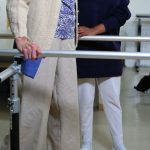
Transgender college students are two to four times more likely than their classmates to have mental health problems, researchers say. They analyzed data from more than 1,200 gender-minority students on 71 U.S. campuses who took part in an annual nationwide survey. Gender-minority means their gender identity differs from the sex assigned to them at birth. About 78% of the students met criteria for one or more mental health problems such as depression, anxiety, eating disorders, self-injury and suicide risk, the survey found. Besides transgender individuals, gender minorities include people who are gender nonconforming, genderqueer and nonbinary. Nearly 60% of them screened positive for clinically significant depression, compared to 28% of students whose sex assigned at birth aligns with their current gender identity (cisgender). “There has never been a more important time for colleges and universities to take action to protect and support trans, genderqueer and nonbinary students on campus,” said lead author Sarah Ketchen Lipson, an assistant professor of health law, policy and management at Boston University. Researchers also found that transgender men and genderqueer students (those who identify with neither, both or a combination of male and female genders) are particularly vulnerable. That requires further study, Lipson said in a university news release. Previous research has shown that transgender college students experience near-constant discrimination and harassment and have higher dropout rates. Campus bathrooms and… read on >
















